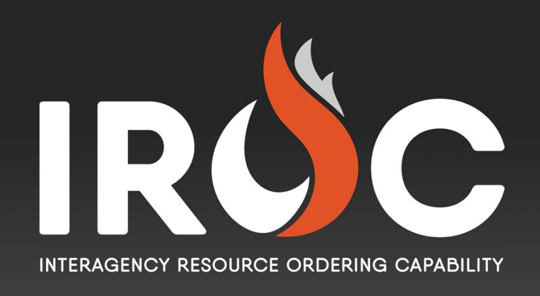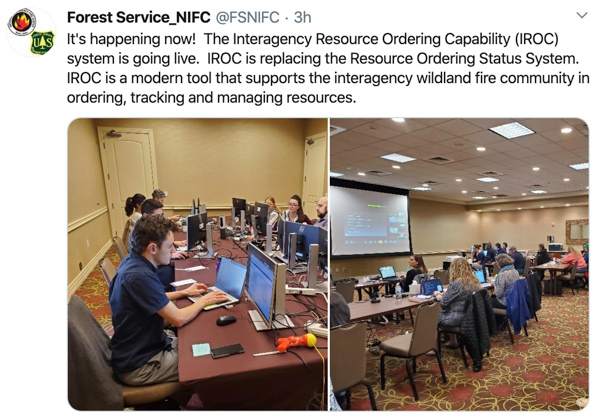A high-ranking officer in one of the southern California county fire departments told me recently that when a fast-spreading fire breaks out, they don’t use the Resource Ordering and Status System (ROSS) that has been around for decades to request assistance from other departments, they get on the phone and talk to their neighbors. “Send me two strike teams.” ROSS is much too slow and cumbersome, they said; it does not work for them.
Now there is an alternative. Today the National Interagency Fire Center flipped the switch to start the process of turning on a new system, the Interagency Resource Ordering Capability (IROC), a new platform‐agnostic (iOS, Android, etc.), web‐based system, that replaces ROSS.
ROSS was turned off at the end of the day on March 5 and from then until today there was no centralized system for ordering and dispatching resources for fires and other types of incidents and keeping track of personnel qualifications. In the interim agencies were told to implement their Continuity of Operations (COOP) plans. Using a phased in process, all Geographic Areas will be brought online by Friday, March 13. If everything goes as planned, and dispatch centers had “buttoned up” transactional data, orders, and travel, the data pulled from ROSS on March 5 will be intact, exactly as it was when ROSS was turned off. This is the hope and expectation, but as we know, transitioning from one very complex software system to another often results in hiccups. Let’s hope it goes well.
IROC has been in development for several years. The proposed U.S. Forest Service budget for next fiscal year decreases funding for ROSS by $3.76 million.
Unfortunately, the NIFC video below, IROC Overview, is very low resolution, 360p, which makes some of the small text difficult to read. Hopefully this is not an indication of the quality of the IROC.


